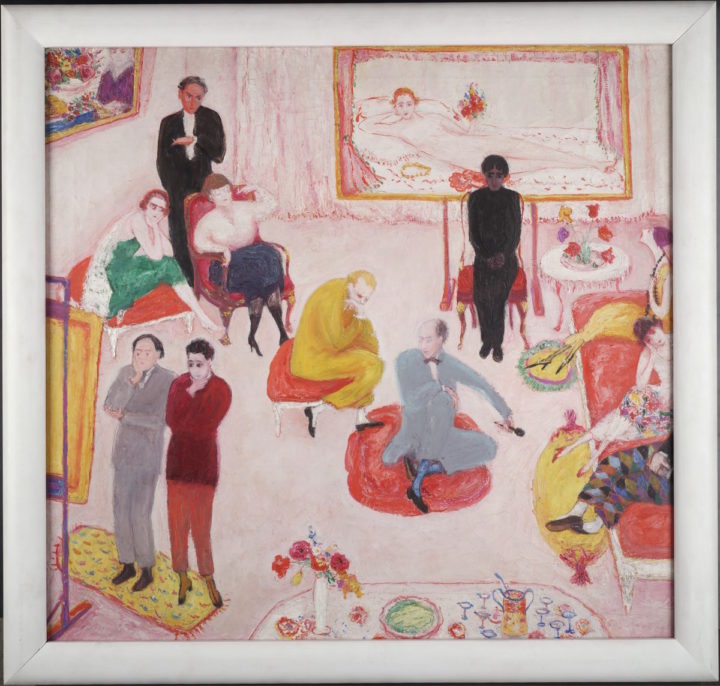Florine Stettheimer, an American painter, designer, Jazz Age saloniste and poet who was part of some of the major avant-garde movements of the 20th century, is only recently garnering attention for her work. After 20 years, the Jewish Museum in the city has just arranged a successful exhibition showcasing her best work. Here are five of her paintings that reveal why her work wasn’t admired then but is now

Instead of receiving flowers from an admirer, she is seen to hold flowers herself implicating self-love. She depicted herself as a modern, independent woman for which the painting was considered to be “morally depraved.”

Florine’s impeccable wit is evident in this piece of art as she mocks people for not recognizing her in her own self-portrait. Florine, herself is sitting next to one of the subjects, head resting on her arm as in her self-portrait, is half amused as if challenging the viewers to see the irony. What a brilliant piece of work!

In this painting of the restricted African-American area of the beach, Florine, unlike her fellow white contemporaries who painted people of colour as demeaning, stereotypical caricatures, painted them as normal people with unique, individual personalities.

In this portrait of Carl Vechten, a writer, critic and collector, she included images of a pile of his own books, a piano representing his criticism of music and many other elements specific to his life and work. Every little piece at every corner is an important detail.

This portrayal of the New York Art world is one of her most acclaimed works. Miniature versions of three of the city’s major art museums are seen along with their directors, critics and photographers. Stettheimer makes an appearance herself at the bottom right. Her unique vision of New York is seen in three other paintings as part of a series of paintings called The Four Cathedrals.

